28th Year of Common Tern Habitat Improvement
by: Lindsay Proulx
Save the River’s program brings many successes and new challenges
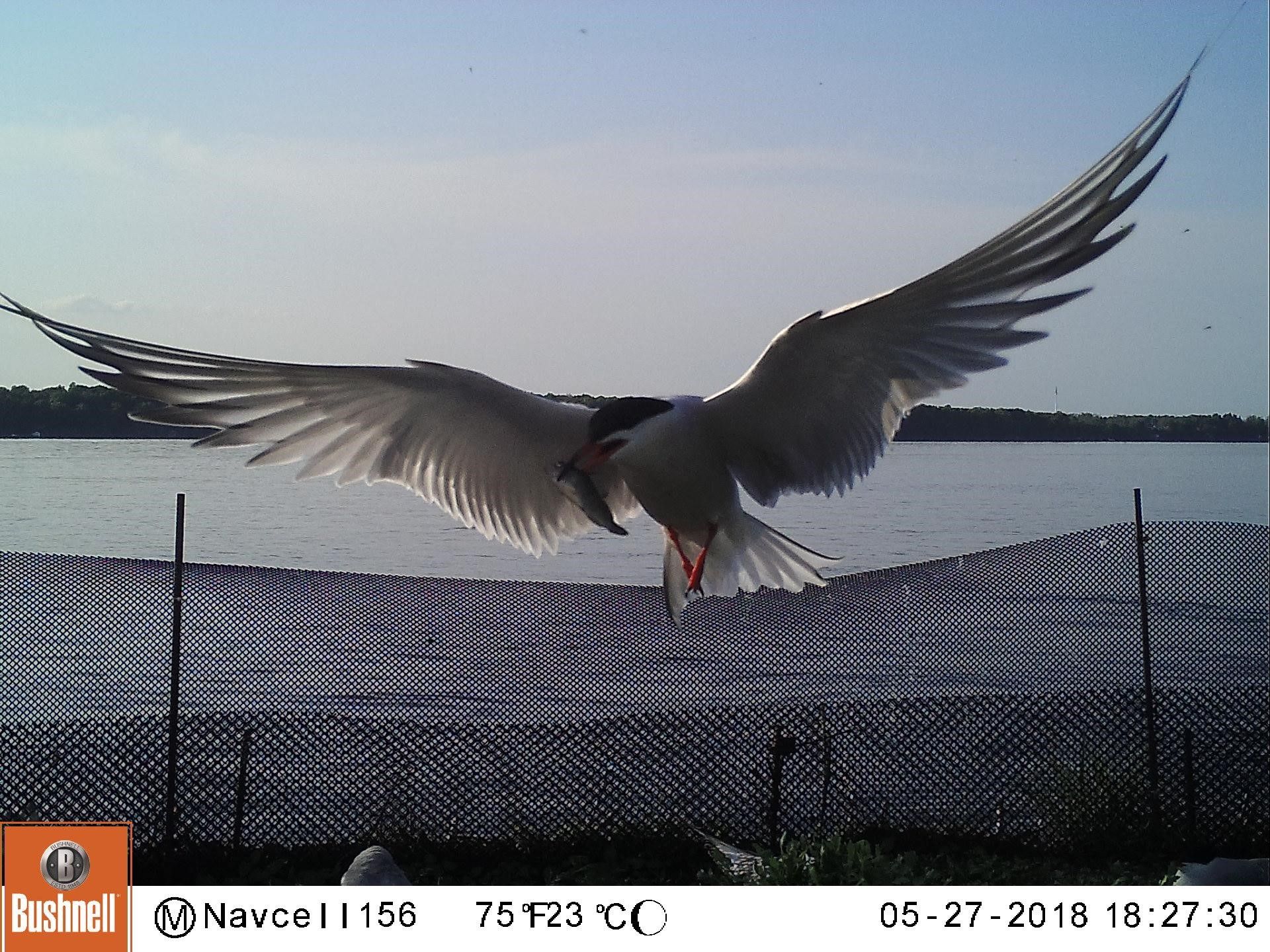
The 28th year of coordinated efforts among partners to increase the St. Lawrence River’s threatened common tern population, through habitat improvement and monitoring projects, have yielded results ranging from record-setting numbers to the total abandonment of historically occupied sites. In spite of these challenges, professionals and volunteers alike remain determined to restore common tern populations to their historical numbers.
The project, led by Dr. Lee Harper and his team at Riveredge Associates, has been successful in its continued execution throughout the Upper St. Lawrence River, thanks to collaboration and cooperation from staff, volunteers, and partners at Save The River®, Upper St. Lawrence RIVERKEEPER®, Thousand Islands Land Trust (TILT), New York State Department of Environmental Conservation, New York Power Authority, and the Saint Lawrence Seaway Development Corporation (SLSDC). In the Thousand Islands, TILT generously allows the use of their boat for nest site maintenance, and is also the landowner of waterbird nesting sites. Similarly, SLSDC has been instrumental in the project by allowing the navigation cells, they own and operate, to be maintained and monitored to increase nesting site availability and protection for common terns.
This year, Save The River’s Outreach Coordinator Margaret Hummel joined a crew of STR staff, including Executive Director John Peach, Program Manager Patricia Shulenburg, volunteer Kate Breheny, and intern Lindsay Proulx, to film common tern monitoring and data collection on a navigation cell.
Dr. Harper notes that “the number of common terns breeding on Lake Ontario and the St. Lawrence River has declined dramatically over the last 50 years from as many as 20,000 nesting pairs to only a few thousand nesting pairs.” This precipitous decline is due to many factors, including: loss of nesting sites, human disturbance, competition with other water birds, nest flooding, and predation. The Common Tern Monitoring and Management Project, conducted since 1990, aims to address these issues by making existing nesting sites more suitable to breeding and attracting common terns to novel sites.
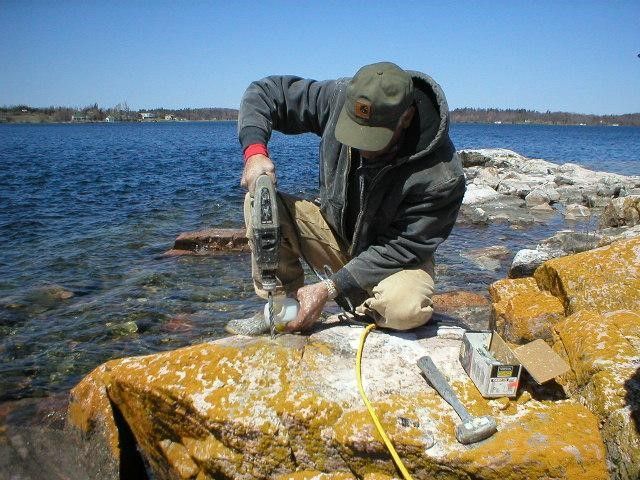
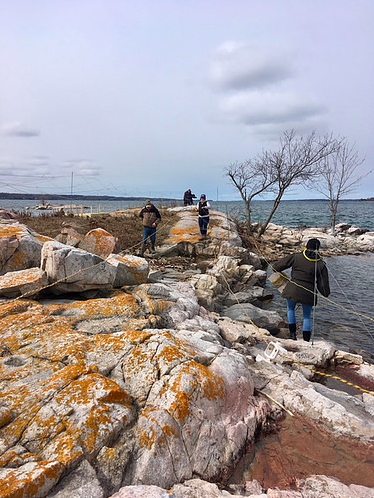

Each year, nest site improvement efforts begin in the spring, when volunteers go to natural shoals near Clayton and artificial navigation cells, to erect gull exclusion grids and fix any damage caused during the winter. Gull exclusion grids are metal wires running along the length of a shoal or from the top to the sides of a navigation cell. They discourage or prevent larger birds, like gulls, from arriving early to sites that common terns populate. Gravel is also added as needed to sites, in order to maintain a depth of about 3 inches. The gravel provides terns substrate to nest in and helps to prevent vegetative growth. Common terns dig a small depression in the gravel, where they lay their eggs. Additional maintenance activities include checking that the fencing around the sides of navigation cells is intact. This fencing prevents chicks from falling or jumping into the water, when they hatch, and divides the navigation cells into five sections to allow for easier data collection later in the season. Chick shelters are placed on shoals and navigation cells to provide cover for hatched chicks, and vegetation is removed as needed to maintain breeding sites. Motion detecting cameras are added to some sites to help identify and track predators.
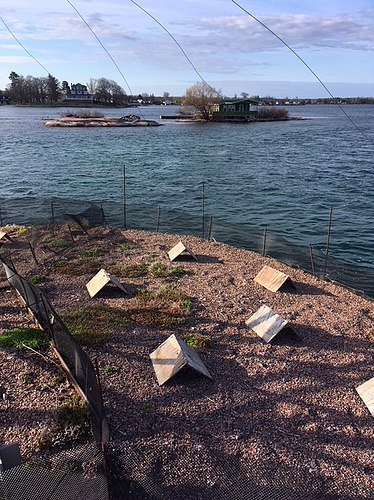
After spring maintenance, partners and volunteers await the arrival of common terns. Volunteers and Save The River staff monitor the six nesting sites from late May to late July. During this time, weekly nest, egg, and chick counts are performed. Once the chicks grow large enough, a stainless-steel band is attached to their lower right leg. Each band has a unique identifying number on it. Band information and identification numbers are used by volunteers and researchers to track common tern migration and productivity. Common terns from the St. Lawrence River have been recaptured as far south as Colombia, Brazil, and Argentina and they have also been observed breeding along Lake Champlain, Lake Superior, and even Cape Cod. This recapture data show that the common tern restoration work, within the St. Lawrence River, positively impacts common tern populations, throughout the Great Lakes, New England, and in their wintering locations worldwide.
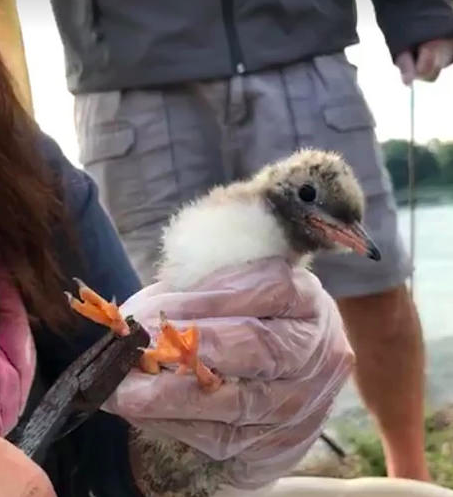
This season’s first visit was on May 18th, to a natural shoal. Disappointingly, no terns were observed nesting in the area. Historically, the site has been a popular common tern nesting site. Last year, there was a high of 35 nests, however, the site was abandoned this year and colonized by gulls and cormorants. This highlights one of the major obstacles to common tern productivity; competition from other colonial waterbird species. There is a limited number of available nest sites for common terns, so every site counts, but terns will also seek out another site in the area if one is at risk of predation. Dr. Harper and Save The River staff, partners, and volunteers will continue to invest in site restoration and competitor and predator excluders, in order to make the shoal a hub of common tern activity once more.
The shoal was not this season’s only setback. One of the four navigation cells that Save The River helps monitor was abandoned, due to an osprey nesting nearby on a lighted marker. Osprey, owl, and mink are common tern chick predators and can negatively affect tern breeding productivity. Although exclusion grids and mink traps can be set to help prevent such attacks, not every deterrent is successful. Dr. Harper reports that this year a few sites downstream of Ogdensburg, NY have been abandoned, due to owl and peregrine falcon activity. Another interesting note from this year’s observations was that common terns catch and eat a variety of small minnows, including golden shiners, spottail shiners, fathead minnows, yellow perch, and pumpkinseed sunfish. This variety suggests that common terns are generalists, when it comes to their fishing habits.
In previous years, sites on the Upper St. Lawrence River have been completely wiped out by predators. This year only one attack occurred on the other shoal that Save the River monitors. Evidence shows that the culprit was most likely either a Great Blue Heron or a mink. Although fifteen chicks were lost in the attack, over thirty chicks fledged (successfully hatched, grew, and flew away) from the shoal during the season. Most importantly, the attack did not lead to nest site abandonment, and six new hatchlings were found on the island the following week. This shoal was also a hotspot for “jumpers.” This is the term given to chicks that fall into the water or swim off the island in their attempt to evade researchers, while banding. When a chick lands in the water, adult common terns will circle it. Volunteers take notice of this behavior and set off to rescue the chick using nets, then safely return it to the nesting site.

Despite these setbacks, not all sites were marked by misfortune. There was a record high number of eggs and chicks at a navigation cell monitored by long-time Save The River volunteer, Jim McGarry. A site-high number of nests on another navigation cell was also recorded, with 47 nests found, surpassing last year’s record of 43 nests. There was a total of 322 nests observed at the six Save The River monitoring sites, and therefore 322 nesting pairs were present in the Thousand Islands Region this season. Additionally, 379 tern chicks were banded, and they will give researchers important productivity and migration information, to inform habitat restoration and species protection efforts.
The data collected by Save The River staff, partners, and volunteers gives policy makers and researchers information about nesting pairs in the area. However, this is a small piece of the puzzle. Dr. Harper reports that there is a total of “thirty-two tern nesting sites, between eastern Lake Ontario and Morristown, NY.” Unfortunately, the majority of the 26 other sites have not been active tern nesting spots since the 1990’s.
The number of tern nests in the Thousand Island region varied during the 1990s and showed a disturbing decline (Figure 1). With the implementation of new management techniques to make more habitat available, starting after 2000, this decline was reversed and the population of common terns in the Thousand Islands increased. The number of tern nests can be affected by many factors, including years with unusually hot or cold weather, but the overall positive trend, since our efforts intensified in 2000, is a testament to the efforts of our project volunteers.
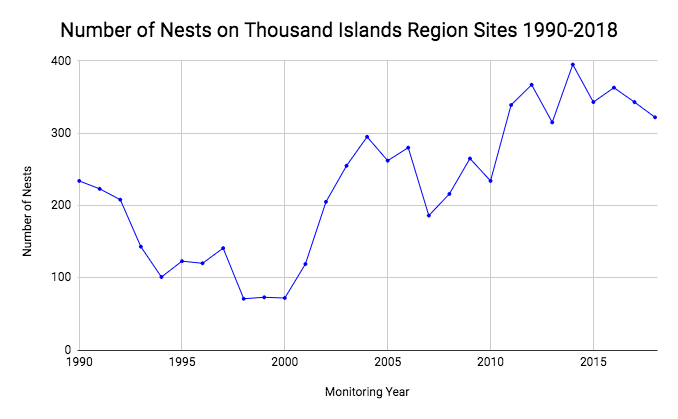
The number of tern nests in the Thousand Island region varied during the 1990s and showed a disturbing decline (Figure 1). With the implementation of new management techniques to make more habitat available, starting after 2000, this decline was reversed and the population of common terns in the Thousand Islands increased. The number of tern nests can be affected by many factors, including years with unusually hot or cold weather, but the overall positive trend, since our efforts intensified in 2000, is a testament to the efforts of our project volunteers.
Looking forward, the partnership plans to continue monitoring common terns and restoring nesting habitat, within the Upper St. Lawrence River. With the persistence and dedication of partners, staff, and volunteers, the hope is that the steady upward trend in tern numbers will continue and these beautiful birds will again be abundant, and populations stable, along the St. Lawrence River. Save The River also plans to partner with Canadian Land Trust representatives and volunteers, to expand the monitoring and habitat improvements to other sites throughout 2018.
Save The River acknowledges the following partners and volunteers, whose passion for the common tern recovery project and love of a healthy St. Lawrence River ecosystem is instrumental to the program success: Dr. Lee Harper and Riveredge Associates, the NYS Department of Environmental Conservation, St. Lawrence Seaway Development Corporation, the Thousand Islands Land Trust, John Peach, Kate Breheny, Bill Munro, Judy Munro, Jim McGarry, Lynn Pol, and Katrin Schubert. For more information about the Common Tern Monitoring and Management Project visit www.savetheriver.org. To follow our work on the project and catch live video feeds of staff and volunteers on-site, be sure to like “Save The River” on Facebook!
By: Lindsay Proulx, Intern, Save The River
Lindsay Proulx is from Canton, New York. She graduated from Elmira College with a Bachelor of Science, in Environmental Studies, in January 2018. She is currently an intern at Save The River and has had the pleasure of coordinating and participating in Common Tern monitoring for the season, as well as tabling at community events and working the STR storefront. The River has captured a piece of her heart, and she will always be an advocate for its restoration, preservation, and protection.


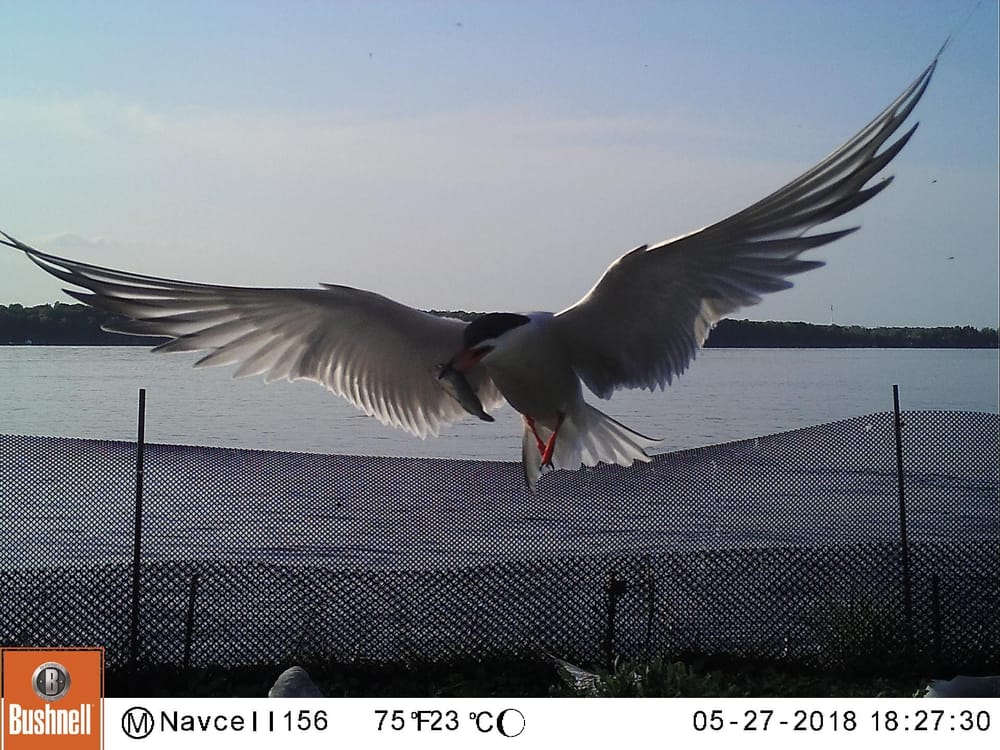
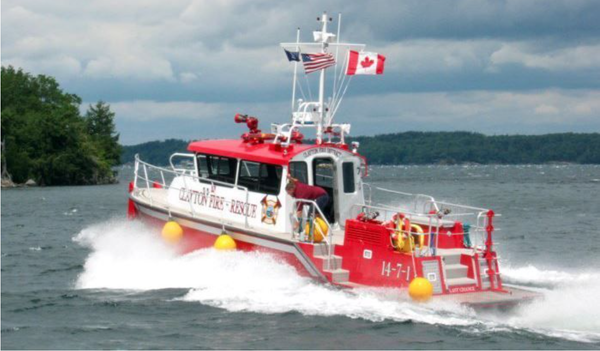


Please click here if you are unable to post your comment.